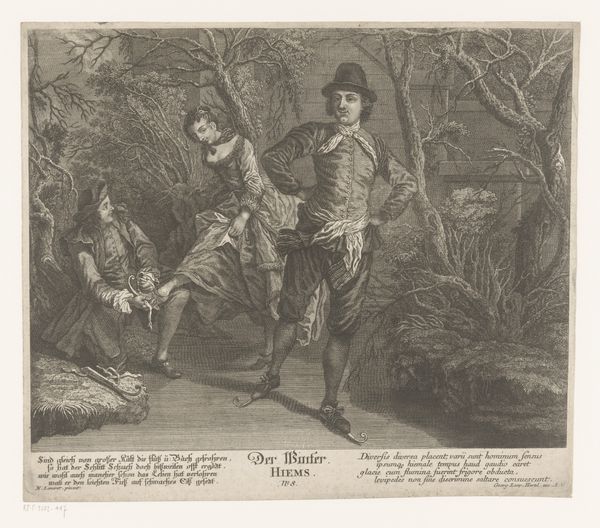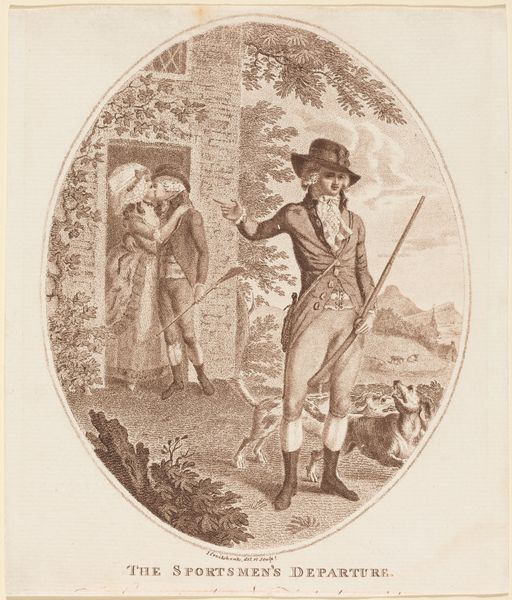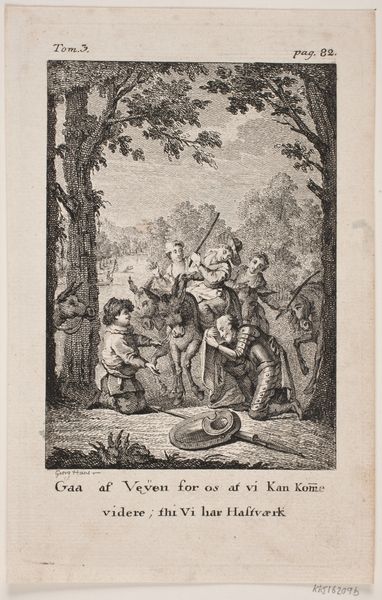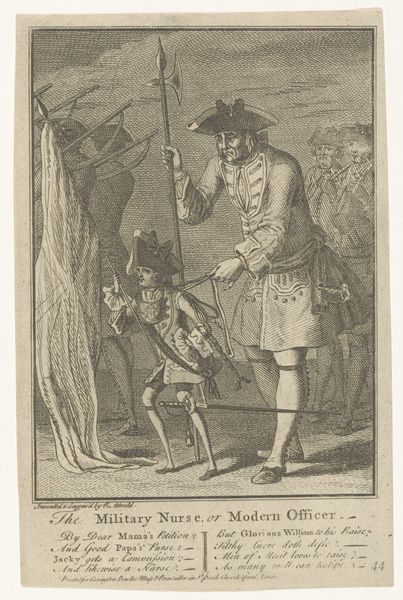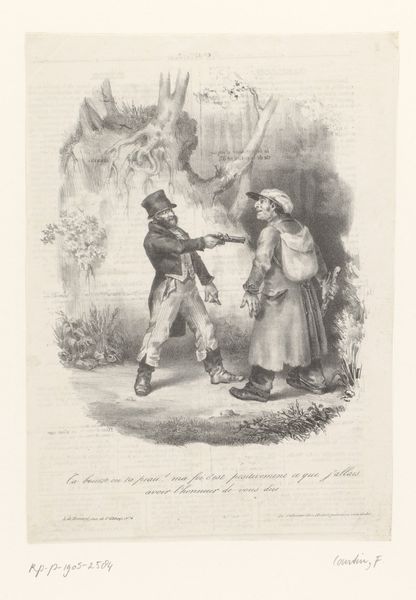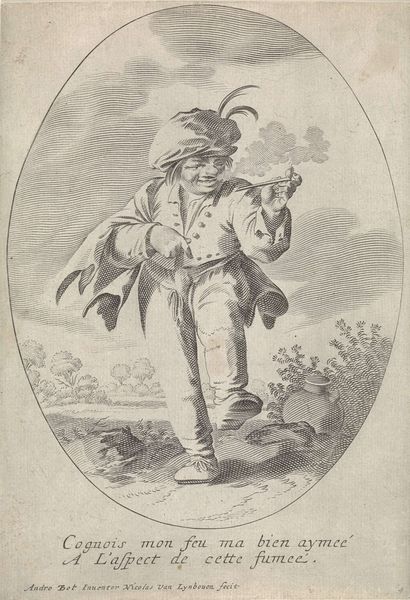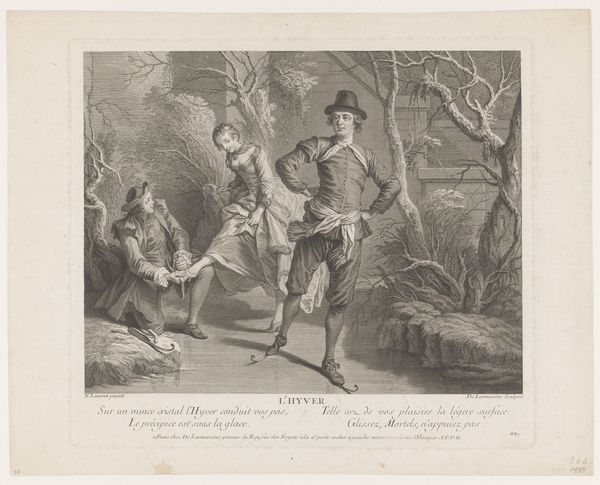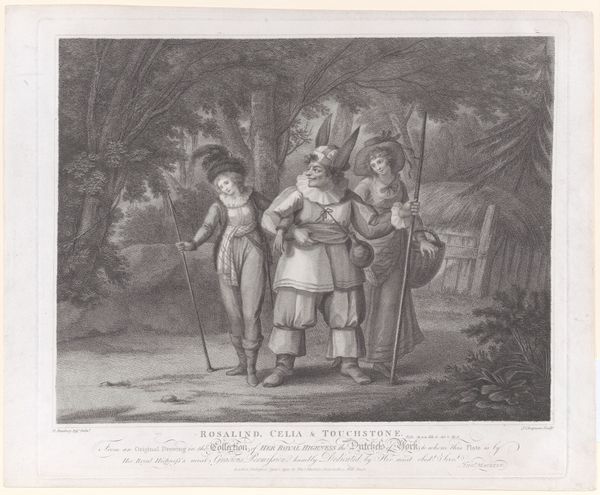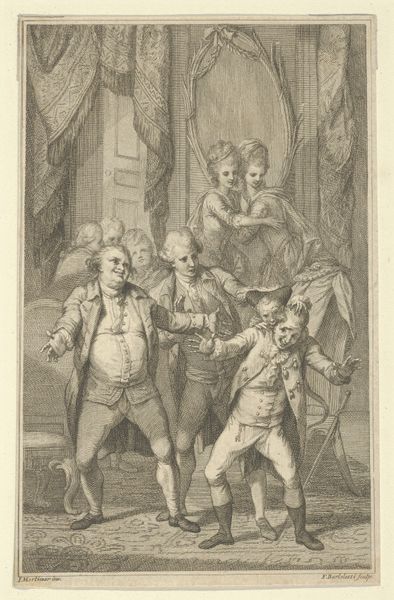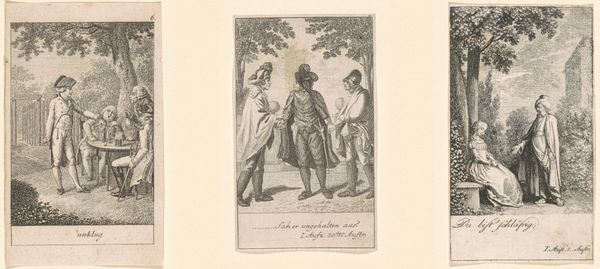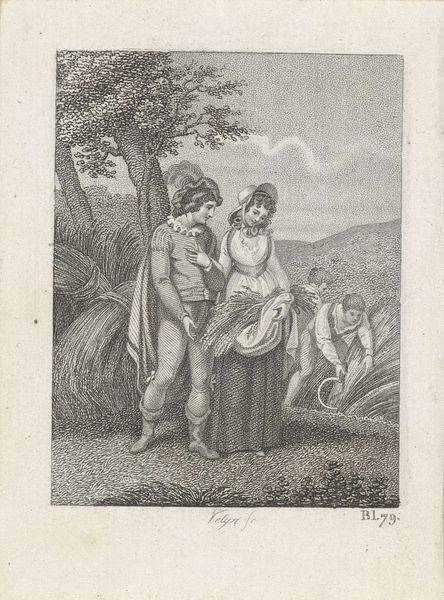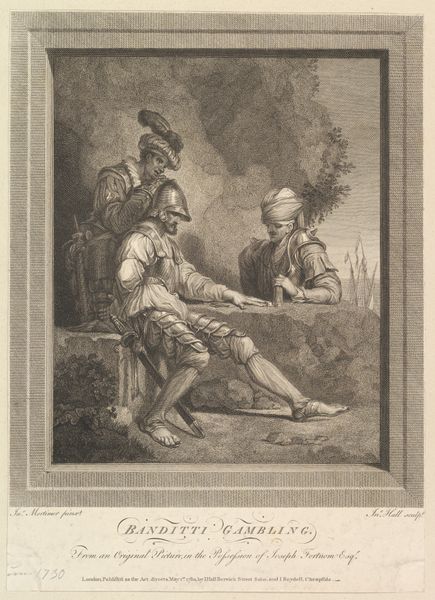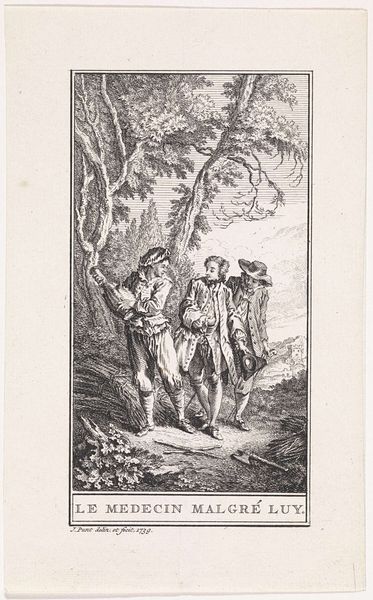
Malvolio (Twelfth Night, Act 2, Scene 5) 1825 - 1840
0:00
0:00
drawing, print, engraving
#
portrait
#
drawing
# print
#
romanticism
#
genre-painting
#
engraving
Dimensions: Sheet: 3 7/16 × 2 9/16 in. (8.8 × 6.5 cm)
Copyright: Public Domain
Curator: This engraving by Charles Heath the Elder, made sometime between 1825 and 1840, illustrates a scene from Shakespeare’s Twelfth Night, specifically Act 2, Scene 5, “Malvolio.” Editor: My first impression is the way Heath has captured the ridiculousness of the character Malvolio – his arrogance is almost tangible! There's such a contrast between the shadowed onlookers and his lit form. It feels very staged. Curator: It's precisely the artificiality that I find compelling. The characters are arranged in a theatrical manner, emphasizing the performative nature of identity itself. And there is an embedded reference here; think of the literary figure of the fool who turns societal norms upside down. In some ways, it asks how the world’s foolishness can be liberating? Editor: Absolutely. It's not just about making fun of Malvolio, it’s also a broader comment on the social structures that enable such figures. We also need to consider that this was a time of rapid social change; images like these spoke volumes about the tensions between the old order and a more modern sense of individual freedom. I mean, this could apply to anyone who's ever felt out of step, regardless of historical time. Curator: Consider the symbolism of the garden setting too, and the shadows that provide glimpses into secret lives. A carefully crafted space concealing more than it reveals. We see characters engaging in deception. Notice, too, that it reflects romantic notions about the sublime in nature that become so widespread during this period. Editor: I am fascinated by the spectators: who gets to laugh at who? Is Heath inviting us to mock Malvolio, or to sympathize? Who holds power within social hierarchies and the way it’s enforced through ridicule. The print’s circulation would also have amplified its impact; who might have identified with Malvolio as someone perceived to have stepped outside social conventions? Curator: Indeed, prints like these weren't just aesthetic objects but cultural mirrors. As we reflect on this piece, its ability to connect to the psychological depths of human experience transcends its historical context, no? Editor: Absolutely! By juxtaposing historical context with broader ideas about identity and power dynamics, we can gain a new lens through which to appreciate and question how we've all been molded.
Comments
No comments
Be the first to comment and join the conversation on the ultimate creative platform.
